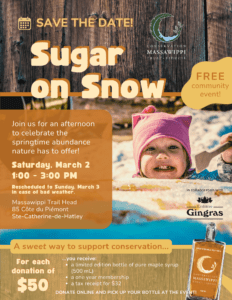Written by Jessica Adams (Nature Nerding)
Reading time: 5-6 minutes

Every seasonal transition has its own flavour, but perhaps the most highly anticipated transition is the one from winter to spring. After months of cold, snow and fleeting sunlight, there is nothing quite like the elation one feels at the first taste of spring.
We start noticing subtle hints mid-winter… but what are the cues indicating change is truly coming? The days get longer, the temperatures warm… and the natural world responds in kind with its own array of displays and transformations reassuring us that spring is indeed in full swing.
This month we are inviting you to slow down so as to notice and perhaps even acquaint yourselves with a few spring classics:
VERNAL POOLS – MORE THAN SPRINGTIME FOREST PUDDLES
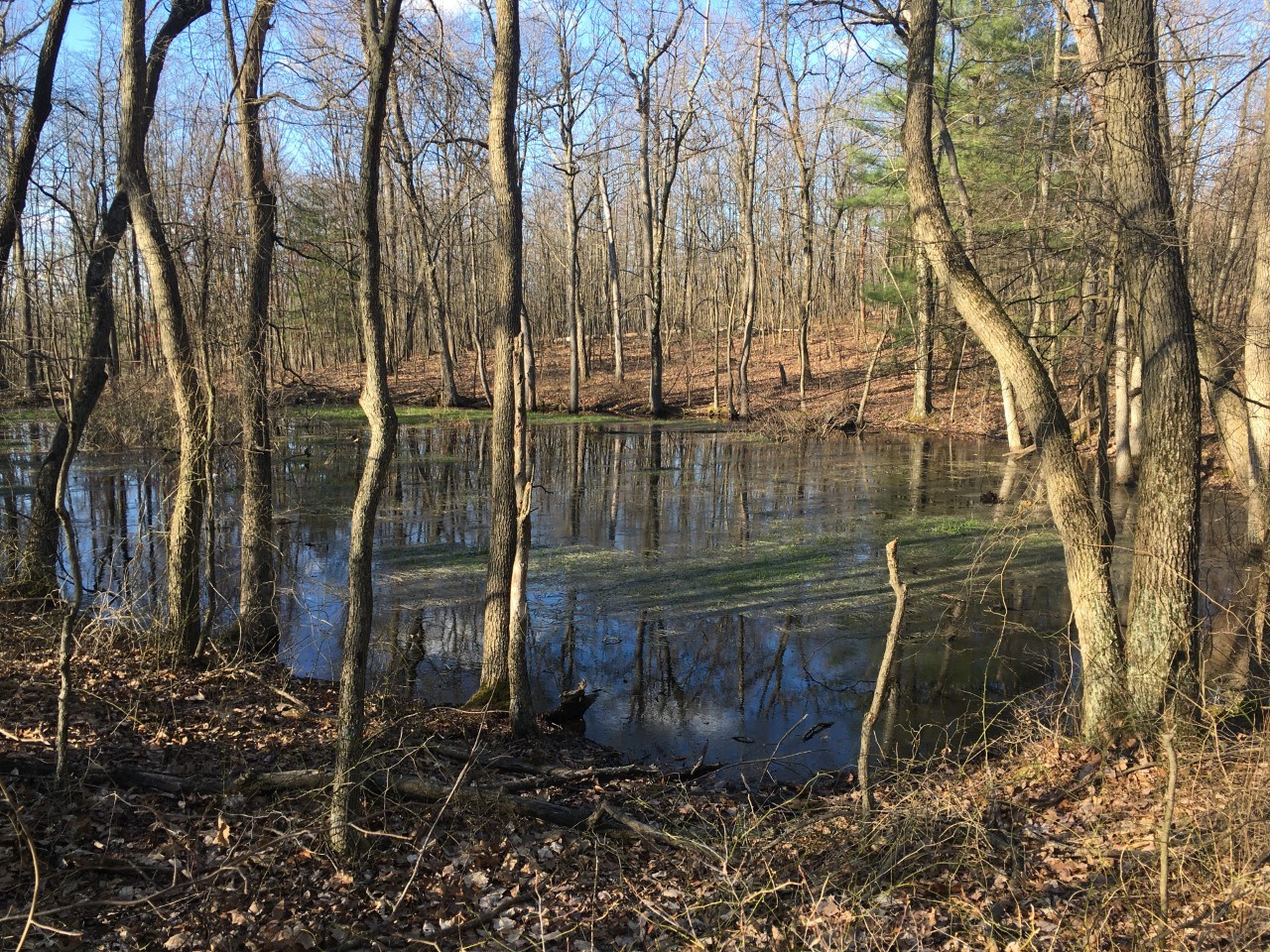 As a child, I remember a certain time of year when the forest would suddenly be full of “ponds”. This was an exciting time as the possibilities for play and exploration were multiplied tenfold! What I did not realize, however, was how important these ephemeral habitats are to the ecosystem.
As a child, I remember a certain time of year when the forest would suddenly be full of “ponds”. This was an exciting time as the possibilities for play and exploration were multiplied tenfold! What I did not realize, however, was how important these ephemeral habitats are to the ecosystem.
Vernal pools are small bodies of freshwater that naturally form in low-lying areas in the forest thanks to rain and snow melt. Though temporary by nature, these seasonal wetland habitats are critical for a variety of species. One reason for this is that they have the unique feature of not containing certain predators, such as fish, due to the fact they are isolated from other bodies of water. As such, frogs, salamanders and fairy shrimp rely on these havens to complete their life cycles with a significantly lower threat of having their eggs or other life stages eaten.
According to Nature Conservancy of Canada, vernal pools are under threat. While their seasonal nature has always implied a certain level of unpredictability, factors such as climate change and habitat loss and degradation are taking their toll on the viability of these habitats. Pools do not last as long, do not swell to as big a size, or – in some cases – do not form at all due to changes in rainfall or landscape. This can mean pool-dependent species suffer from higher resource competition or lack of space (in the case of smaller pools) or simply do not have enough time to complete their lifecycle (in the case of shorter pool lifespan).
Invitation – One of the most beautiful things about nature is the inherent purpose of every element in a system, no matter how trivial it might seem to the untrained eye. Vernal pools are no exception. This spring, as the snow gives way to damp leaf litter and mud, see if you can notice the forming of vernal pools in the forests you frequent. Stop and take the time to see if you can spot any of the critters that typically occupy them. Consider the temporary world you are witnessing and how, within a few weeks, it will disappear, not without first fulfilling a vital role in the surrounding ecosystem.
SKUNK CABBAGE – A REAL BOTANICAL TRAILBLAZER
 Most flowering plants wait to bloom once the threat of snow has more or less passed, but one of our local flowering plants has other plans. Keen to claim its place in the moister sections of the forest floor, this plant slowly begins to emerge from the still-frozen ground…
Most flowering plants wait to bloom once the threat of snow has more or less passed, but one of our local flowering plants has other plans. Keen to claim its place in the moister sections of the forest floor, this plant slowly begins to emerge from the still-frozen ground…
One of few plants capable of thermogenesis, the Skunk Cabbage is able to grow and thrive in snowier conditions. The flower absorbs oxygen and transforms it into heat, which melts the snow surrounding the plant, protects the plant’s cells from freezing and provides a favourable microenvironment for its flowers to develop.
Very cool. But why? What is the advantage of showing up so early to the party – especially when there is still snow to contend with? Simply put, the Skunk Cabbage fills a niche that is otherwise unoccupied. It may not look like your conventional flowering plant, but its blooms are one of the first available food sources to pollinators. Named for the pungent odour it emits, meant to resemble that of decomposing flesh, Skunk Cabbage appeals to flies and gnats primarily. However, other insects such as beetles and bees may find themselves visiting the plant either because it is a rare food source for the time of year or, it is speculated, because of its warmth.
Invitation – At a time when many other species are laying low, waiting for more favourable conditions, the Skunk Cabbage challenges what we think we know about the growing season in our climate. I encourage you to set yourself the goal of finding Skunk Cabbage in a humid wooded area near you. Beyond its ability to act as a botanical space heater, it is a flower of stunning character. Bring a magnifying glass with you – what can you learn simply by observing closely with the help of all your senses?
THE SOUNDS OF SPRING – A MULTI-SPECIES SYMPHONY

What does spring sound like? For me it sounds like…
- a cacophony of “chicks” and trills rising up from the reeds in the morning sun
- a whistle and whisper on the wind high above your head as the sky slowly darkens
- a lone, almost hesitant “cluck” in the mild night air, eventually followed by a resounding chorus of croaks
Of course, the sounds we associate with spring depend on the habitats that surround us, who occupy them and at what precise moment of spring we choose to tune in. Even then, the exact composition can differ according to the day, hour, weather and so much more.
Spring is a time of awakening, homecoming and preparation which has the natural world abuzz with activity. Territories being claimed, food being foraged, mates being wooed – everything has a sound that goes along with it. So what is the soundtrack to spring in your neighborhood?
Invitation – Two taxa that take centre stage in the background soundtrack to spring are birds and amphibians. Who do you notice in your surroundings? Below is a list of species you may just be able to hear this spring. Click the link associated with each one, listen carefully and see if you can detect their sounds amidst the ever-evolving chorus throughout April and May.
1. Red-winged blackbird
2. American robin
3. Ruffed grouse
4. American woodcock
5. Wilson’s snipe (winnow)
6. Wood frog
7. Spring peeper
8. American toad
At first, it can be challenging to learn how to recognize a species by its sound which is why I recommend learning one at a time. It helps to keep a journal where you not only describe the sound but take note of when you hear it (date and time of day) and where you hear it. This helps you contextualize the sound and also observe any changes from one point in the season to another. Bonus: if you keep a journal this year, you can look back on it next year and compare!
Sometimes we are so focused on the destination of ‘summertime’ that we forget to enjoy the journey that is the spring. Consider this an invitation to slow down more than usual this spring and soak in all of the signs of the natural world re-awakening.
Build Your Nature Vocabulary
Use the text and search the web to build your nature vocabulary and try using it the next time you’re out and about in nature, either making observations by yourself or with friends!
- Vernal
- Fairy shrimp
- Thermogenesis
- Niche
- Taxa (singular, taxon)
References
– Naturally Curious: A Photographic Field Guide and Month-by-Month Journey through the Fields, Woods, and Marshes of New England par Mary Holland
– Maine Department of Environmental Protection – Fact Sheet Vernal Pools: A Significant Wildlife Habitat
– Nature Conservancy of Canada – Vernal pools (Part One)
– National Wildlife Federation – Skunk Cabbage
– University of Wisconsin-Madison, Wisconsin Horticulture – Skunk cabbage, Symplocarpus foetidus


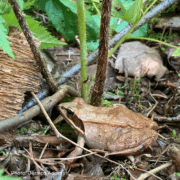

 As a child, I remember a certain time of year when the forest would suddenly be full of “ponds”. This was an exciting time as the possibilities for play and exploration were multiplied tenfold! What I did not realize, however, was how important these ephemeral habitats are to the ecosystem.
As a child, I remember a certain time of year when the forest would suddenly be full of “ponds”. This was an exciting time as the possibilities for play and exploration were multiplied tenfold! What I did not realize, however, was how important these ephemeral habitats are to the ecosystem. Most flowering plants wait to bloom once the threat of snow has more or less passed, but one of our local flowering plants has other plans. Keen to claim its place in the moister sections of the forest floor, this plant slowly begins to emerge from the still-frozen ground…
Most flowering plants wait to bloom once the threat of snow has more or less passed, but one of our local flowering plants has other plans. Keen to claim its place in the moister sections of the forest floor, this plant slowly begins to emerge from the still-frozen ground…
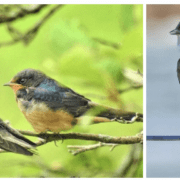


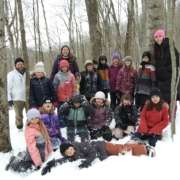


 – Black-Capped Chickadee
– Black-Capped Chickadee


